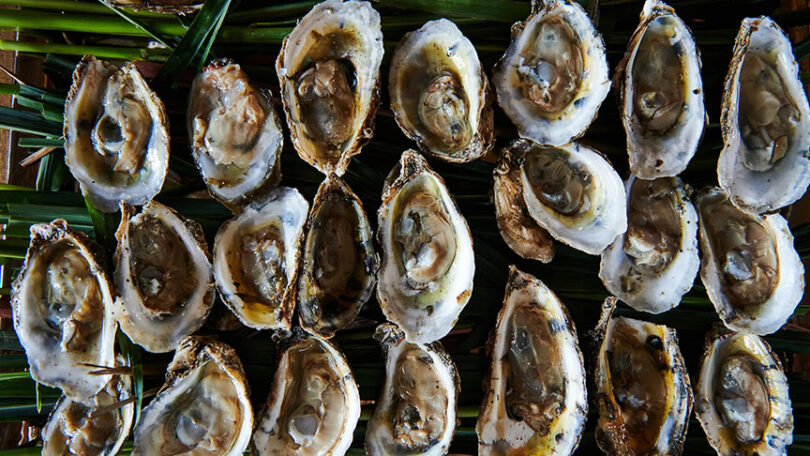Oysters from Harkers Island. PHOTO BY LAUREN VIED ALLEN FOR THE WASHINGTON POST VIA GETTY IMAGES
The mighty oyster is a balm for the coastline.
One adult oyster alone can filter 50 gallons of water a day, improving water quality.
Clusters of them create reefs that shelter other organisms and act as natural sea walls that combat flooding and erosion.
Why it matters: There is hope that they might also be able to support the farmers that live alongside them in one of the most economically disadvantaged parts of the state.
Tom Looney, a former Lenovo executive and a board member of the N.C. Coastal Federation, views the oyster as a potential economic development tool for the region.
Oysters after all, Looney told Axios, are big business in Virginia and could be here as well.
For years, Looney and the N.C. Coastal Federation have advocated for the state to invest in its oyster industry and restore the large-scale reefs that once dominated our shoreline before they were either overharvested or damaged by pollution. Their efforts have so far worked.
Their efforts have so far worked, resulting in more funding for Carteret County Community College’s aquaculture program, a partnership with the N.C. Rural Center to get low-cost loans to new shellfish farmers, a grant from NOAA to expand oyster sanctuaries in Pamlico Sound, regulatory changes to how oyster leases operated and an extensive marketing campaign.
By the numbers: Nearly 55,000 bushels of oysters (there’s typically 100 oysters in a bushel) came from state aquafarms in 2022 — a new high, according to research compiled by the North Carolina Sea Grant and shared with Axios.
That number was up 19% from 2021 and more than 500% from a decade ago.
Ana Zivanovic-Nenadovic, chief program director for the N.C. Coastal Federation, said the growth is especially remarkable given the negative effects of COVID-19 and hurricanes Florence, Michael and Dorian.
In 2022, North Carolina’s wild-and-farmed shellfish industry contributed $31.7 million to the state’s economy, North Carolina Sea Grant found.
Looney and other advocates believe the industry can contribute $100 million to the economy by 2030.
The growth will hopefully carry on, especially with continued investment from the state and other organizations, Zivanovic-Nenadovic said.
The biggest project getting off the ground is next year’s construction of an shellfish aquaculture hub—believed to be the first of its kind in the country—in Carteret County.
The $1.8 million hub will be funded by the federal government, the N.C. General Assembly and the Golden Leaf Foundation. It will provide farmers with access to waterfront space and docks as well as refrigeration storage that can be hard to come by.
“I am not a fan of the win-win-win expression, but in this case, there’s nothing else to use,” Zivanovic-Nenadovic said.
“Because oysters are good for water quality, for habitat, for culture and heritage, for industry and the economy and people love to eat them.”
Zachery Eanes, Axios Raleigh







